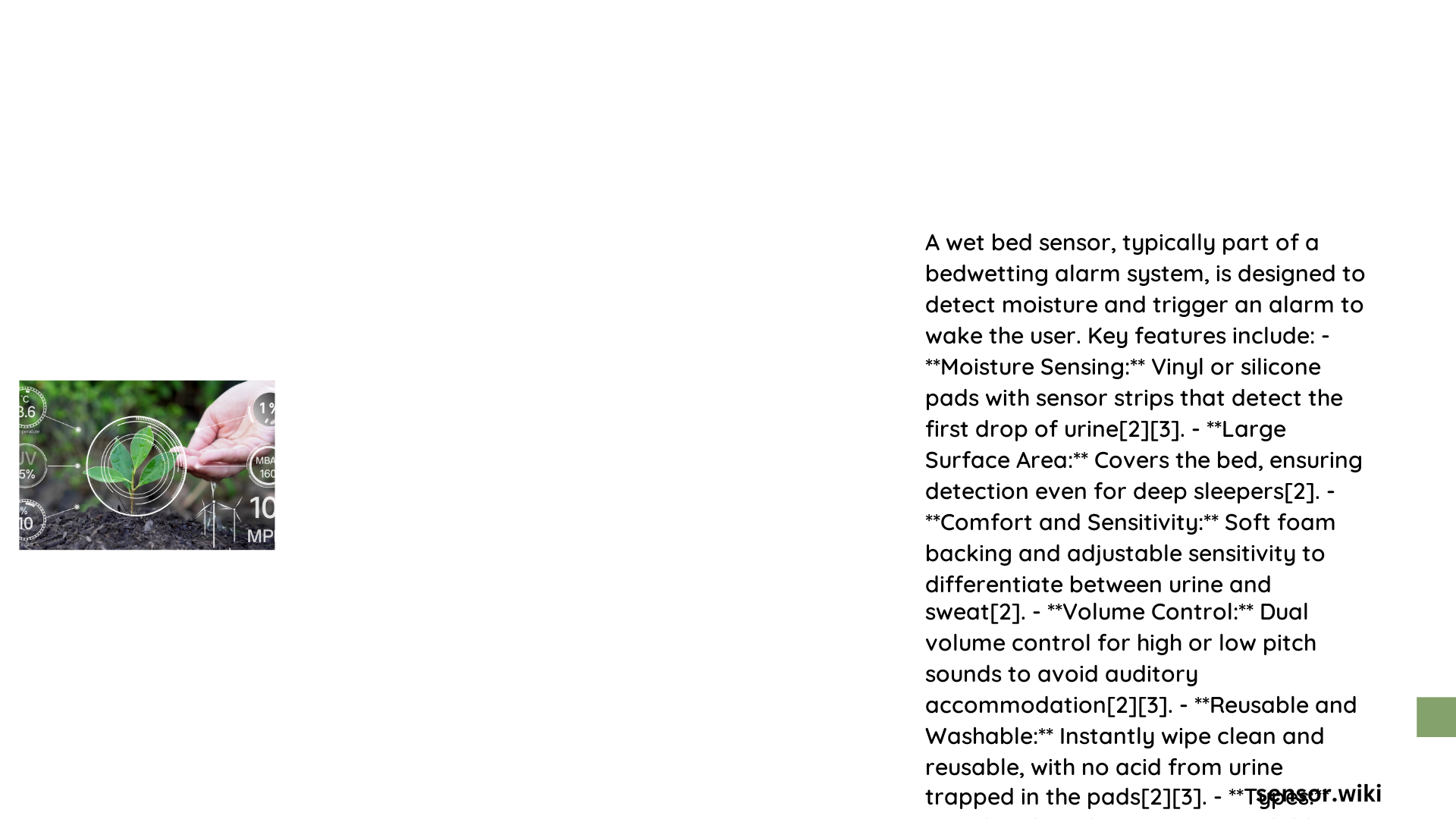Wet bed sensors represent innovative technological solutions designed to address nocturnal enuresis, providing real-time moisture detection and alerting mechanisms for children and caregivers. These sophisticated devices utilize advanced sensor technologies to identify liquid presence, triggering immediate notifications through sound, vibration, or wireless communication, helping children develop bladder control and reducing nighttime accidents.
What Are Wet Bed Sensors?
Wet bed sensors are specialized electronic devices engineered to detect moisture during sleep, primarily targeting bedwetting challenges in children. These sensors employ various detection mechanisms:
Types of Wet Bed Sensors
- Pad-Based Sensors
- Vinyl-constructed sensor pads
- Pressure and moisture detection
-
Corded connection to alarm unit
-
Wearable Sensors
- Underwear-integrated moisture detectors
- Direct contact with body
-
Wireless/wired alarm transmission
-
Wireless Sensor Systems
- Remote transmission capabilities
- Flexible placement options
- Battery-powered operation
How Do Wet Bed Sensors Work?

| Sensor Type | Detection Method | Alarm Mechanism | Battery Requirements |
|---|---|---|---|
| Pad Sensors | Pressure + Moisture | Corded Alarm | Not Applicable |
| Wearable Sensors | Direct Liquid Contact | Sound/Vibration | 2 AAA Batteries |
| Wireless Sensors | Transmitter Detection | Remote Receiver | 2 AA Batteries |
Key Technical Specifications
Moisture Detection Accuracy
- High-precision sensor technology
- Sensitivity to minimal liquid presence
- Temperature range: -30°C to 60°C
- Humidity tolerance: 5% to 95%
What Are the Benefits of Wet Bed Sensors?
Wet bed sensors offer multiple advantages:
- Early Intervention: Immediate accident detection
- Behavioral Training: Helps children recognize bladder signals
- Psychological Support: Reduces anxiety around bedwetting
- Parental Assistance: Provides real-time monitoring
What Factors Should You Consider When Choosing?
Selection Criteria
- Comfort of sensor placement
- Alarm volume and type
- Battery life
- Durability
- Ease of cleaning
Cost Considerations
Wet bed sensor prices range from:
– Budget Options: $40 – $60
– Advanced Systems: $80 – $150
– Rental Options: $15 per month
Maintenance and Care
- Cleaning: Use soft, dry cloth
- Storage: Keep in cool, dry place
- Battery Replacement: Follow manufacturer guidelines
- Sensor Pad: Wipe after each use
Potential Limitations
- Potential false alarms
- Initial discomfort for children
- Learning curve for proper usage
- Varying effectiveness based on individual cases
Recommended Usage Strategy
- Consult pediatric healthcare professional
- Select appropriate sensor type
- Implement consistent training
- Maintain patience and positive reinforcement
- Track progress systematically
Emerging Technologies
Future wet bed sensors are likely to incorporate:
– AI-driven pattern recognition
– More discreet design
– Enhanced wireless capabilities
– Integration with smartphone applications
Conclusion
Wet bed sensors represent a compassionate technological solution for managing childhood bedwetting, offering hope and practical support for families navigating this common developmental challenge.
References:
- https://bedwettingstore.com/products/wet-call-bed-side-bedwetting-alarm-with-pad
- https://www.midzu.com/Product-304-Bed-wetting-alarm.html
- https://pioneermedicaleurope.co.uk/brands/bed-wetting-alarm/
